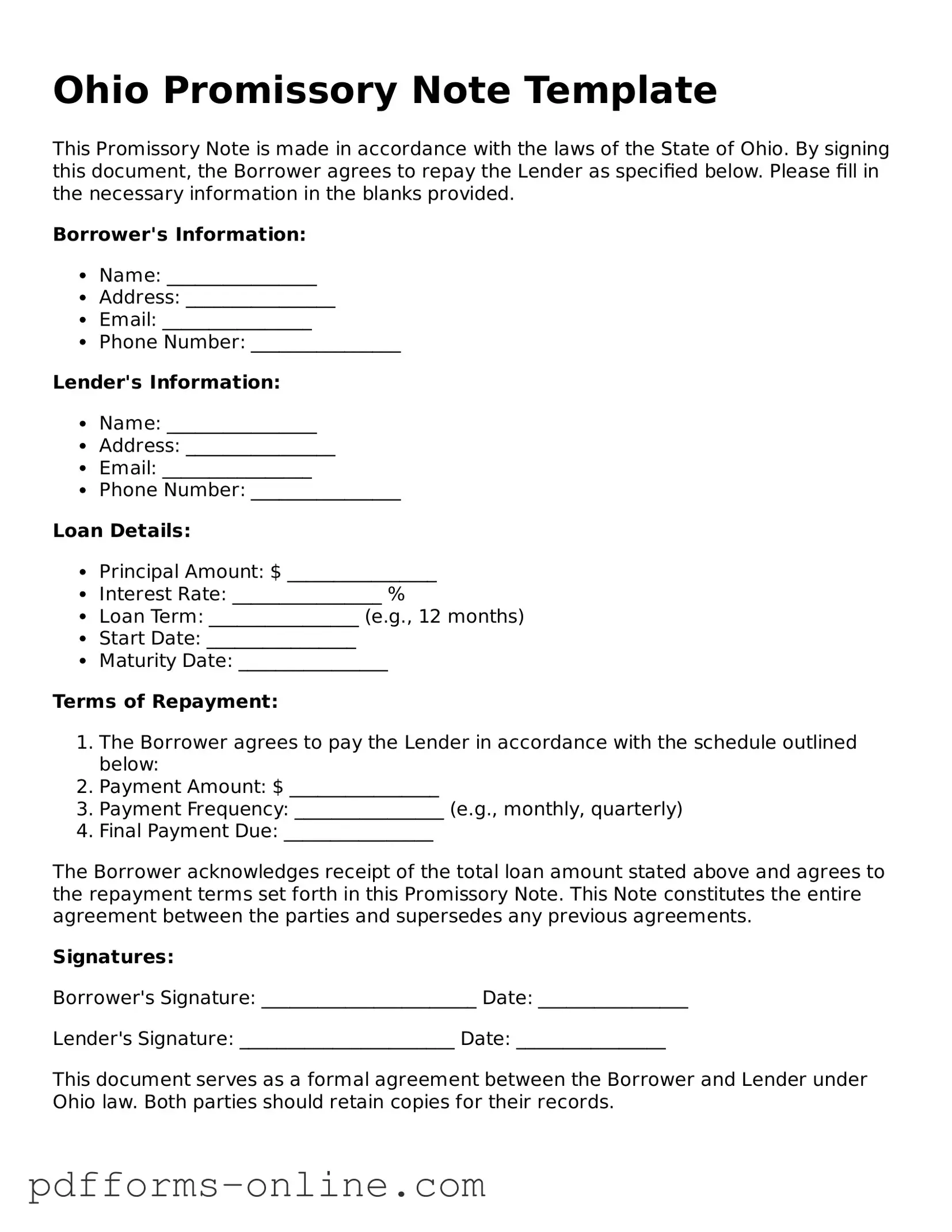The Ohio Promissory Note form shares similarities with a Loan Agreement. Both documents outline the terms of a loan, including the amount borrowed, interest rates, and repayment schedules. A Loan Agreement tends to be more comprehensive, often including clauses about collateral, default, and other conditions. However, like a Promissory Note, it serves as a written acknowledgment of the debt and the borrower's commitment to repay it. Essentially, both documents create a legal obligation for the borrower to repay the lender, but the Loan Agreement provides a more detailed framework for the transaction.
Another document that resembles the Ohio Promissory Note is a Secured Promissory Note. This type of note includes a promise to repay the borrowed amount, similar to a standard Promissory Note, but it also specifies collateral that secures the loan. If the borrower defaults, the lender has the right to claim the collateral. This added layer of security makes the Secured Promissory Note appealing to lenders, as it reduces their risk. Both documents function as evidence of the debt, but the Secured Promissory Note offers additional protection for the lender.
A third document that is similar is the Personal Loan Agreement. This agreement outlines the terms between a borrower and a lender for personal loans, often used for purposes like home improvements or debt consolidation. Like the Ohio Promissory Note, it specifies the loan amount, interest rate, and repayment terms. However, the Personal Loan Agreement may also include conditions regarding the borrower's financial status or stipulations about how the loan can be used. Both documents serve to formalize the borrowing relationship, ensuring that both parties understand their rights and responsibilities.
Understanding the financial implications of various documents, such as the Ohio Promissory Note, is crucial for both lenders and borrowers. For those seeking further insights into related financial documents, OnlineLawDocs.com provides valuable resources and information on topics like the Profit And Loss form, which helps in evaluating a company's overall financial health.
Lastly, the Ohio Promissory Note can be compared to a Business Loan Agreement. This document is utilized when a business borrows funds, and it includes similar elements such as the loan amount, interest rates, and repayment terms. However, a Business Loan Agreement may also address specific business-related conditions, such as the purpose of the loan or the financial health of the business. While both documents create a binding obligation for repayment, the Business Loan Agreement often incorporates additional considerations relevant to commercial transactions, making it tailored for business needs.
